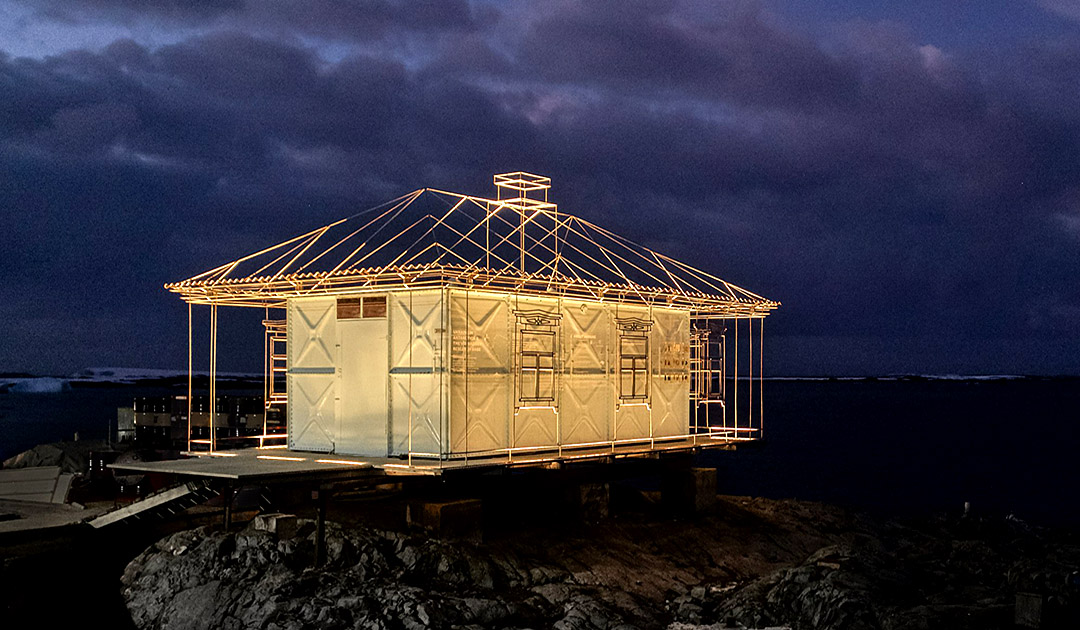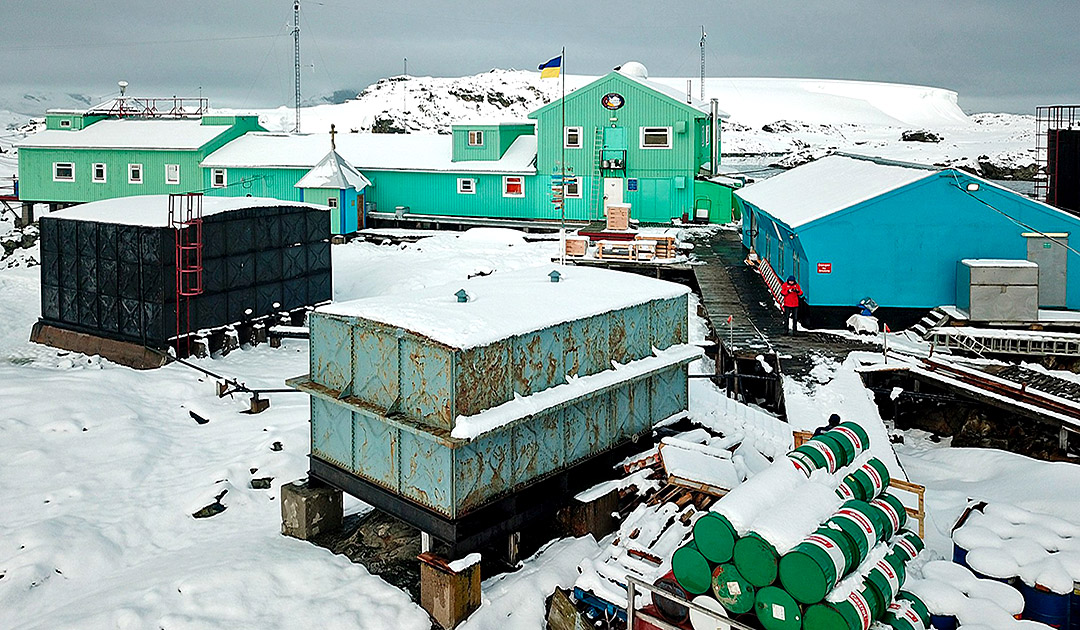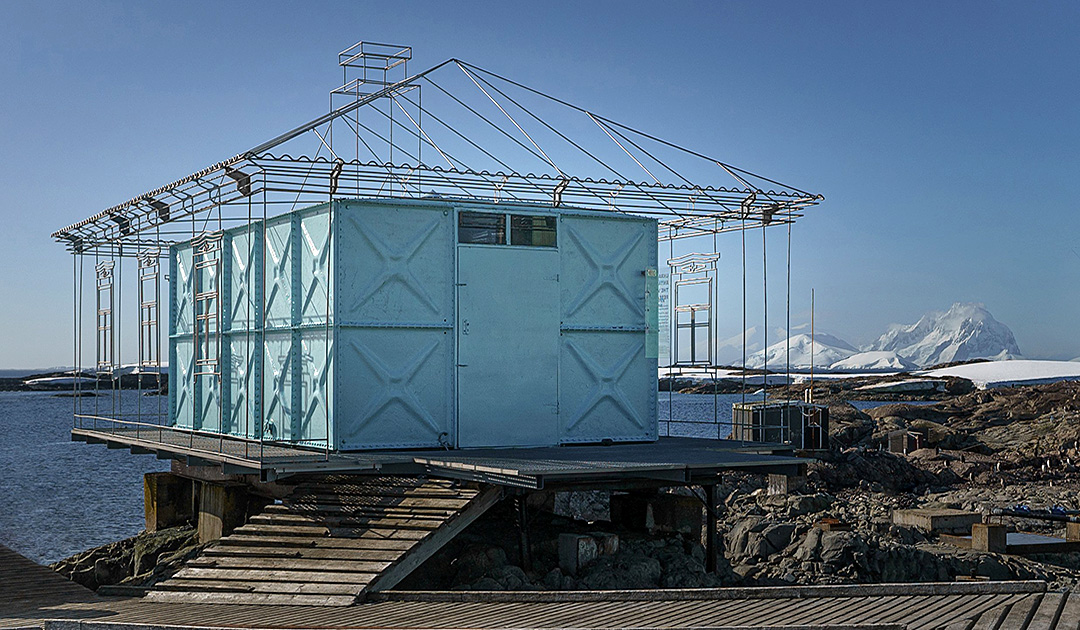
Cities around the world are home to a great diversity of museums, such as the Louvre in Paris, the Guggenheim Museum in New York, and the Acropolis Museum in Athens, just to name a few. Some of them count up to 2.8 million (Louvre) visitors.
But art is occasionally found also in Antarctica. The latest art installation of a special kind was erected at the Ukrainian Vernadsky station. An old fuel tank that was no longer needed was to be reused for this purpose. The plan was to reinvent the appearance and function of the fuel tank, transforming it into an attractive object for tourists that integrates organically into the Antarctic landscape.

In November 2021, Kiev-based architectural firm Balbek Bureau was commissioned to redesign a decommissioned fuel tank at Ukraine’s Vernadsky Research Station. Commissioned by the National Antarctic Research Center with support from the Silpo retail chain, the installation was designed as an attraction for tourists and a “home away from home” for polar researchers who inhabit the base. The job required straightforward installation, resistance to extreme weather conditions and safe coexistence with the 3,500 penguins that live on the island. The installation is intended to be a permanent fixture on the landscape as long as the penguins continue to welcome the structure.

Based on a composite image of a rural Ukrainian house, Bureau Balbek designed an installation in which a delicate metal frame wraps around the tank. On the outside walls of the tank is a mini-exhibition with panels displaying symbolic memorabilia encapsulated in epoxy resin.
On January 28, 2022, the Ukrainian icebreaker “Noosfera” set off for Antarctica together with the installation. After delivery to the station, the parts were stored and now, in the last few months, installed. For the assembly, architect Slava Balbek and Dmytro Sinoviev, who was responsible for the construction, traveled to Vernadsky Station to supervise the assembly.

Extreme weather conditions had to be taken into account when planning the installation. The main requirements for construction are resistance to low temperatures from +5 to -30 °C, strong winds of up to 40 m/s and almost 300 days of precipitation per year.
Vernadsky research station is a second home for the polar researchers living there. With this in mind, the architects proposed to create an installation inspired by a typical Ukrainian house, one associated with warmth, comfort and coziness. For the researchers it is a reminder of their homeland, for the approximately 4,000 tourists who visit Vernadsky every year it should be an inspiration to learn more about Ukraine.

In addition to the 12 residents of the station, the island is home to more than 3,500 penguins. The installation had to be safe for the local fauna, but at the same time robust enough to withstand the “attacks” of penguins that like to nest among the station.
The issue of transport and assembly also presented a challenge. Installation made in Kiev should be assembled on site without professional equipment and contractors, so as to affect the environment as little as possible. Maintenance also had to be thought of: Maintenance of the system, such as removing frozen snow, should not be time-consuming. The installation can be lighted if needed, but this is primarily during the winter when penguins are not there and disturbed. Because especially then the station residents should feel close to their homeland, especially in these times.

Heiner Kubny, PolarJournal
More on the topic





